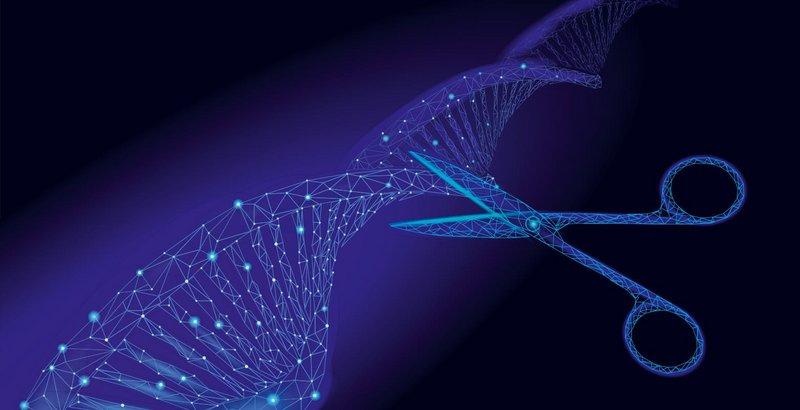With both methods, cells can be altered in a controlled manner, for example by reducing the expression of a certain protein. Both RNAi and CRISPR/Cas9 are based on the fact that an RNA molecule, produced in the laboratory, can recognize a selected cellular RNA or DNA sequence and process it by using associated proteins.
RNA interference was discovered at the turn of the millennium and was awarded the Nobel Prize in 2006. It is a naturally occurring mechanism in fungi, plants and animals that enables the regulation of gene expression. The method works transiently, i.e. without having to change the underlying genome. Today, research is being carried out at full speed into the clinical application of RNAi. The RNAi principle is very simple: Normally, a gene produces mRNA, which is then translated into a functional protein. In order to prevent this protein production, the mRNA can be attacked directly. For this purpose, short double-stranded and complementary RNA molecules are produced in the laboratory (siRNA: small interfering or small interference RNA). These are introduced into the cell, where a protein complex called RISC binds one of the two strands. This RNA-protein complex searches for the complementary cellular mRNA molecule, which is then cut up and degraded. As consequence, no protein can be synthesized.
CRISPR/Cas9 - the new universal tool for genetic engineering
The CRISPR/Cas9 system originates from bacteria. They use it as a kind of immune system with which they can fight off viruses.
Years of basic research have made it possible to develop a molecular tool out of this natural system that works not only in bacteria but in all living cells.
The CRISPR/Cas9 system consists of two components: the Cas9 enzyme, a kind of molecular scissor, and a guide-RNA that leads the Cas9 enzyme to the target sequence. Once Cas9 has reached its target sequence on the DNA using the guide-RNA, Cas9 cuts the DNA into two strands.
If a repair template is now added to the CRISPR/Cas9 system, this template can be used to repair the cut DNA. By using this approach, it would be possible, for example, to repair a defective DNA sequence that leads to a disease.



